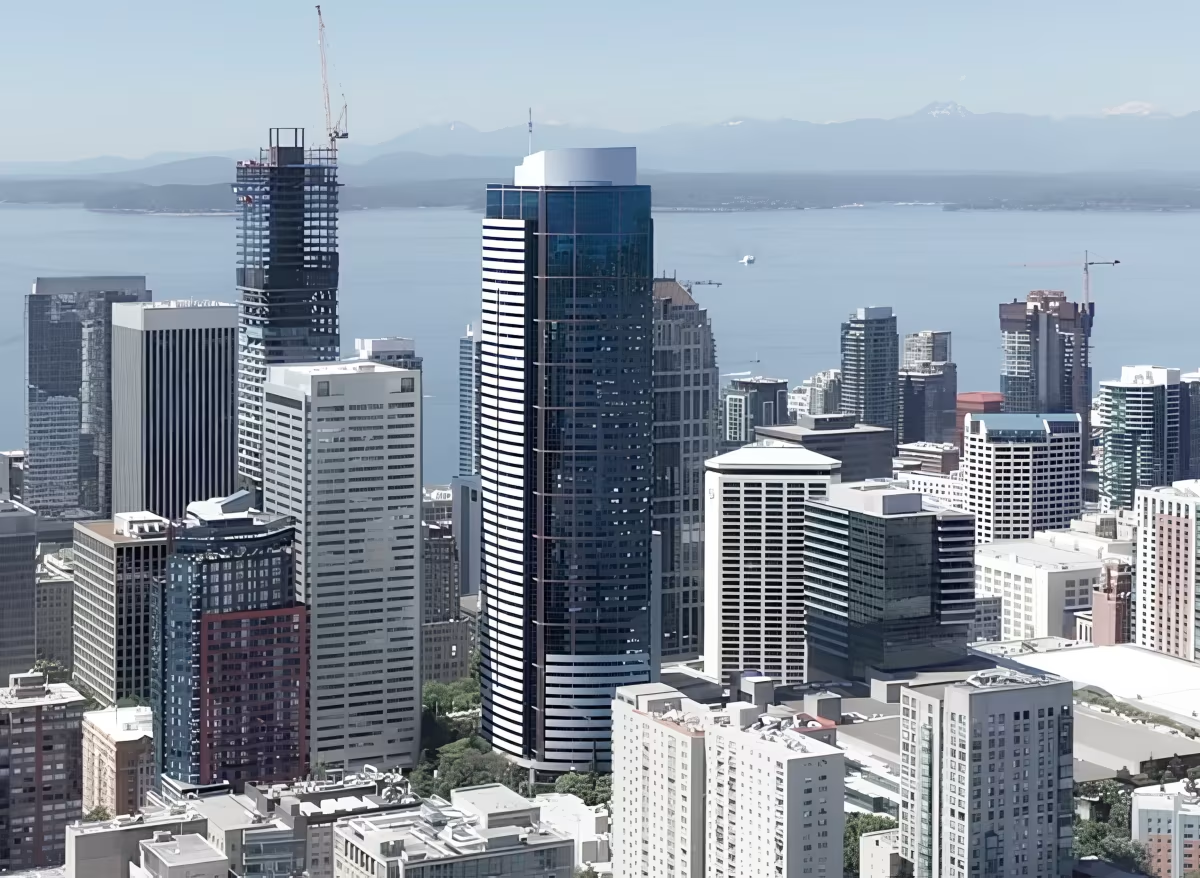DocuSign Tower vs Two Union Square


Comparing the DocuSign Tower and the Two Union Square is interesting because they both rise in Seattle, WA, yet they were conceived by two different design teams, McKinley Architects and NBBJ, and were completed at different points in time. They were finished more than 6 years apart.
This contrast within the same city allows us to see how different creative minds interpreted the evolving needs of Seattle across time.
Let's take a closer look!
Height & Size
The Two Union Square is clearly the larger tower of the two, both in terms of height and number of floors. It rises to 741ft (226m) with 56 floors above ground, while the DocuSign Tower reaches 574ft (175m) with 47 floors above ground.
Of course, each project may have faced different briefs or regulatory constraints, which we don't really know about and could also explain the outcome.
Architectural Style
Both the DocuSign Tower and the Two Union Square were designed in line with the aesthetic conventions of the Modern style.
Both buildings were completed when the Modern style was already past its peak. This makes them feel like late echoes of the movement, more reflective of continuity or nostalgia than of cutting-edge design at the time.
Uses
Both the DocuSign Tower and the Two Union Square were designed to serve as commercial towers, and that has remained their main use since their completion, serving similar roles in the urban fabric.
Both towers provide significant parking capacity, with DocuSign Tower offering 668 spaces and the Two Union Square offering 1100.
Structure & Facade
The two towers rely on different structural systems, reflecting distinct engineering strategies.
The DocuSign Tower uses a Frame structural system, which relies on a regular grid of columns and beams to sustain its weight, while the Two Union Square uses a Framed Tube In Tube system, that combines a strong central core with a perimeter tube of columns.
Yet, when it comes to their facade, they both employed the same solution, a Curtain Wall facade.
A curtain wall is a non-load-bearing facade hung from the structural frame. It is anchored to floor slabs and transfers only its own weight and wind loads, allowing for sleek, glassy exteriors.
| DocuSign Tower | Two Union Square | |
|---|---|---|
| McKinley Architects | Architect | NBBJ |
| 1983 | Year Completed | 1989 |
| Modern | Architectural Style | Modern |
| Commercial | Current Use | Commercial |
| 47 | Floors Above Ground | 56 |
| 6 | Floors Below Ground | 4 |
| 175 m | Height (m) | 226 m |
| 87,753 m² | Usable Area (m²) | 104,650 m² |
| Frame | Structure Type | Framed Tube In Tube |
| Steel | Vertical Structure Material | Steel And Reinforced Concrete |
| Concrete And Steel | Horizontal Structure Material | Reinforced Concrete |
| No | Facade Structural? | No |
| Glass, Steel | Main Facade Material | Granite, Glass |
| Howard S. Wright Construction | Main Contractor | Turner Construction Company |
| WA | State | WA |
| Seattle | City | Seattle |
| 999 Third Avenue | Address | 601 Union Street |